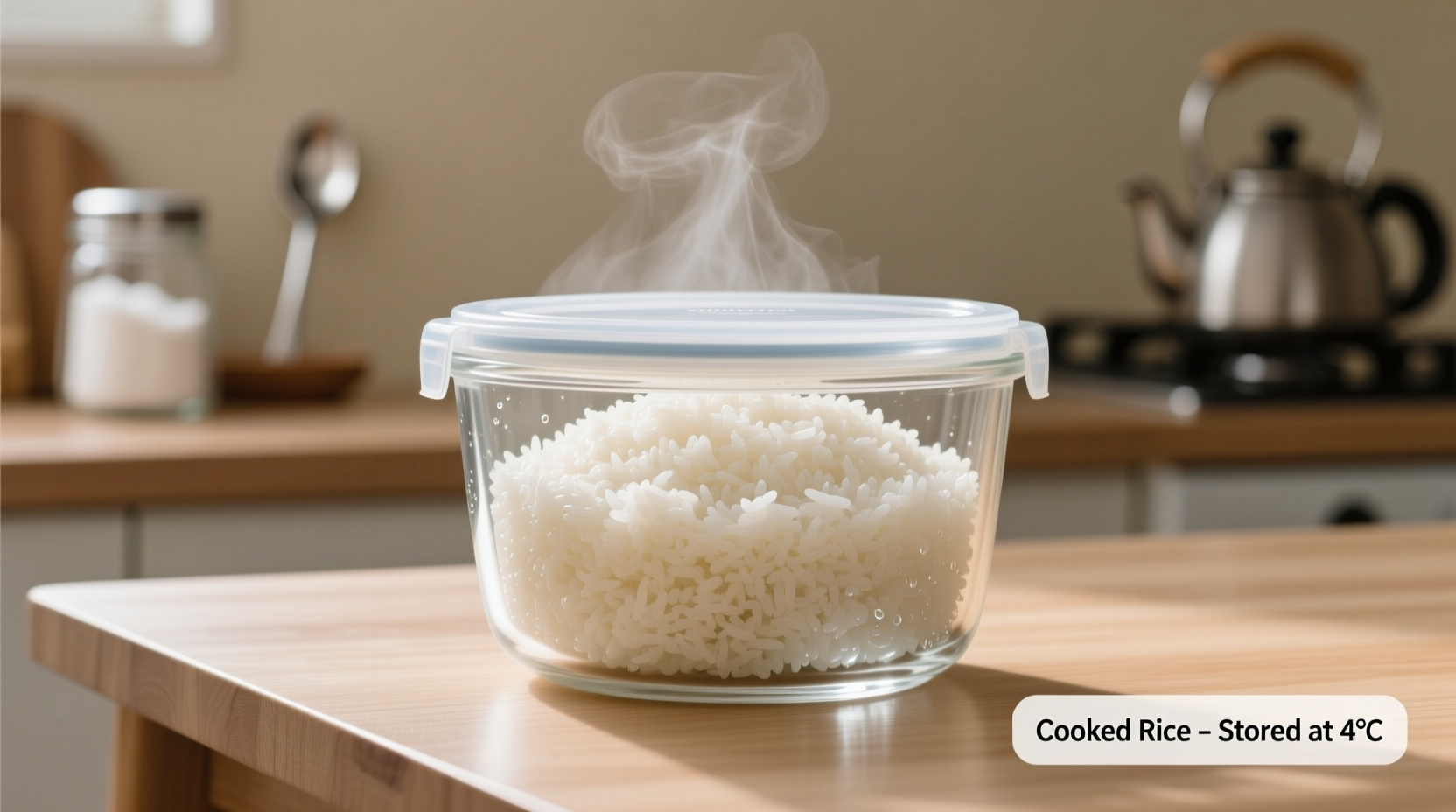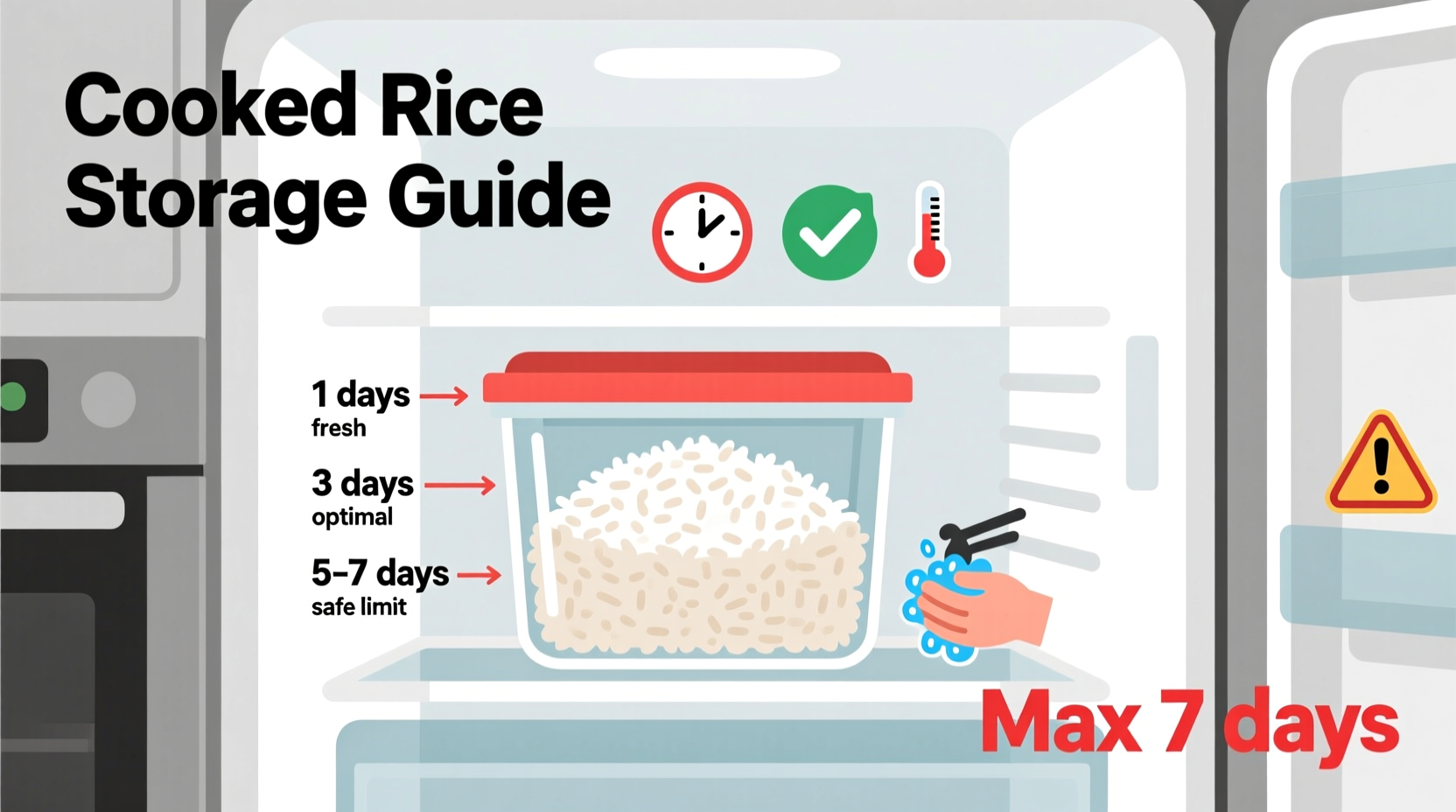Why Proper Rice Storage Matters More Than You Think
That leftover rice in your fridge could be harboring dangerous bacteria without showing obvious signs of spoilage. Unlike many foods, cooked rice presents unique food safety challenges because of Bacillus cereus spores that survive cooking and multiply rapidly at room temperature. Understanding proper storage isn't just about avoiding waste—it's crucial for preventing foodborne illness that affects over 60,000 Americans annually according to the CDC.

The Critical First 2 Hours: Your Rice Safety Window
Time starts ticking the moment your rice finishes cooking. The USDA Food Safety and Inspection Service emphasizes that cooked rice must be refrigerated within 2 hours (or 1 hour if room temperature exceeds 90°F/32°C). This narrow window exists because:
- Bacillus cereus spores survive cooking and become active between 40-140°F (4-60°C)
- Rice's high moisture content creates an ideal breeding ground
- Spores produce heat-stable toxins that aren't destroyed by reheating
Step-by-Step Refrigeration Protocol
Follow these professional kitchen-tested steps to maximize both safety and quality:
- Cool rapidly: Spread rice in a thin layer on a clean baking sheet—never leave it sitting in the cooking pot
- Portion control: Divide into shallow containers no deeper than 2 inches (5 cm) for faster cooling
- Airtight storage: Use glass or BPA-free plastic containers with tight seals to prevent moisture loss
- Label clearly: Note both storage date and "use by" date (3 days from cooking)
- Refrigerator placement: Store on middle shelf where temperature is most consistent
Rice Freshness Timeline: What Actually Happens
| Timeframe | Microbial Activity | Quality Changes | Safety Status |
|---|---|---|---|
| 0-2 hours | Spores remain dormant | Optimal texture and flavor | Safe if refrigerated |
| 2-4 hours | Spores begin multiplying | Slight moisture loss | Risk increases significantly |
| Day 1-2 | Moderate bacterial growth | Firmer texture, slightly dry | Safe when properly stored |
| Day 3-4 | Significant bacterial growth | Dry, hard grains | Last safe window |
| Day 5+ | Dangerous toxin levels | Unpleasant odor, slimy texture | Unsafe—discard immediately |
When Different Rice Types Change the Clock
Not all rice varieties behave the same in storage. The USDA's FoodKeeper app provides these specific guidelines:
- White rice: Maximum 4 days (most susceptible to spoilage)
- Brown rice: 3-4 days (higher oil content accelerates rancidity)
- Wild rice: 4-5 days (more resistant to bacterial growth)
- Fried rice: 3 days max (egg and meat ingredients reduce shelf life)
Spoilage Warning Signs You Can't Ignore
Don't rely solely on the calendar—your senses provide critical safety information. Discard rice immediately if you notice:
- Visual cues: Discoloration, mold spots, or slimy film
- Texture changes: Extreme hardness or mushiness beyond normal refrigeration effects
- Odor signals: Sour, fermented, or "off" smells (fresh rice should have neutral aroma)
- Taste test danger: Never taste questionable rice—Bacillus cereus toxins won't alter flavor
Safe Reheating Methods That Actually Work
Proper reheating destroys bacteria but doesn't eliminate existing toxins. Follow these CDC-recommended steps:
- Thaw frozen rice in refrigerator overnight (never at room temperature)
- Add 2 tablespoons water per cup of rice to restore moisture
- Heat to minimum internal temperature of 165°F (74°C)
- Stir frequently for even heating—microwave in 30-second intervals
- Consume immediately after reheating—don't re-refrigerate
Common Myths That Could Make You Sick
Food safety misconceptions about rice storage abound. Let's clarify:
- Myth: "If it looks and smells fine, it's safe to eat"
- Fact: Bacillus cereus toxins don't alter appearance or odor—USDA warns against this dangerous assumption
- Myth: "Reheating kills all risks"
- Fact: While heat destroys bacteria, it doesn't neutralize pre-formed toxins that cause vomiting and diarrhea
- Myth: "Rice lasts longer than other leftovers"
- Fact: Rice spoils faster than most cooked grains due to its unique starch composition—follow the 3-4 day rule strictly
When Freezing Makes Sense for Longer Storage
For extended storage beyond 4 days, freezing is your best option. The National Center for Home Food Preservation confirms frozen rice maintains safety for 6-8 months when:
- Stored in airtight freezer bags with air pressed out
- Portioned in 1-2 cup servings for quick thawing
- Labeled with both freezing date and "use by" date (6 months)
- Thawed in refrigerator—not at room temperature











 浙公网安备
33010002000092号
浙公网安备
33010002000092号 浙B2-20120091-4
浙B2-20120091-4